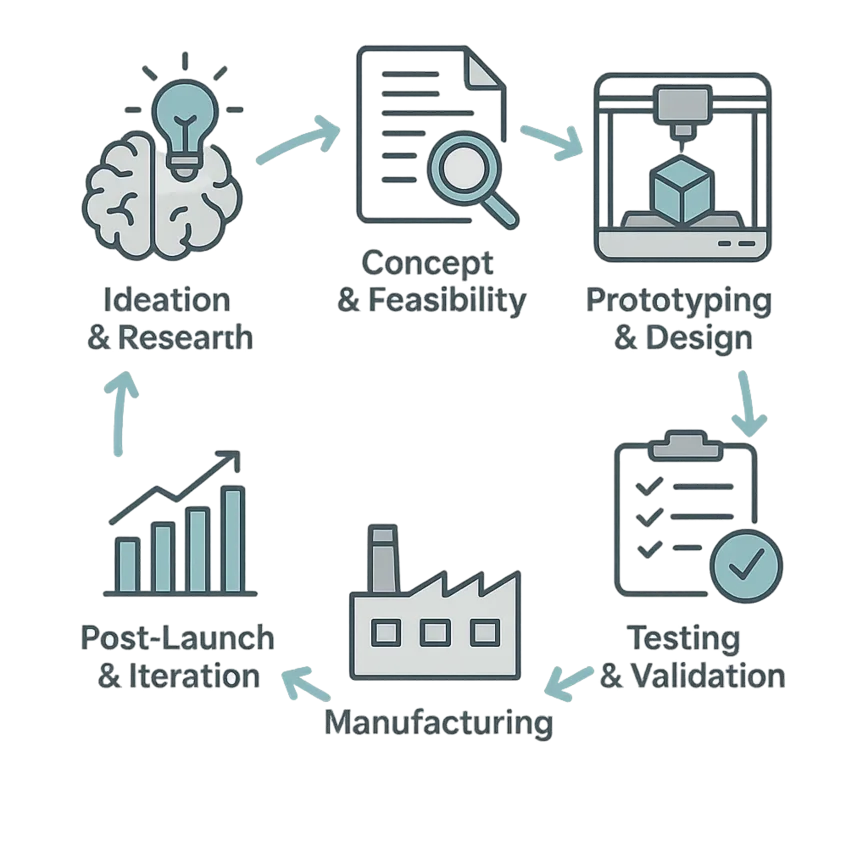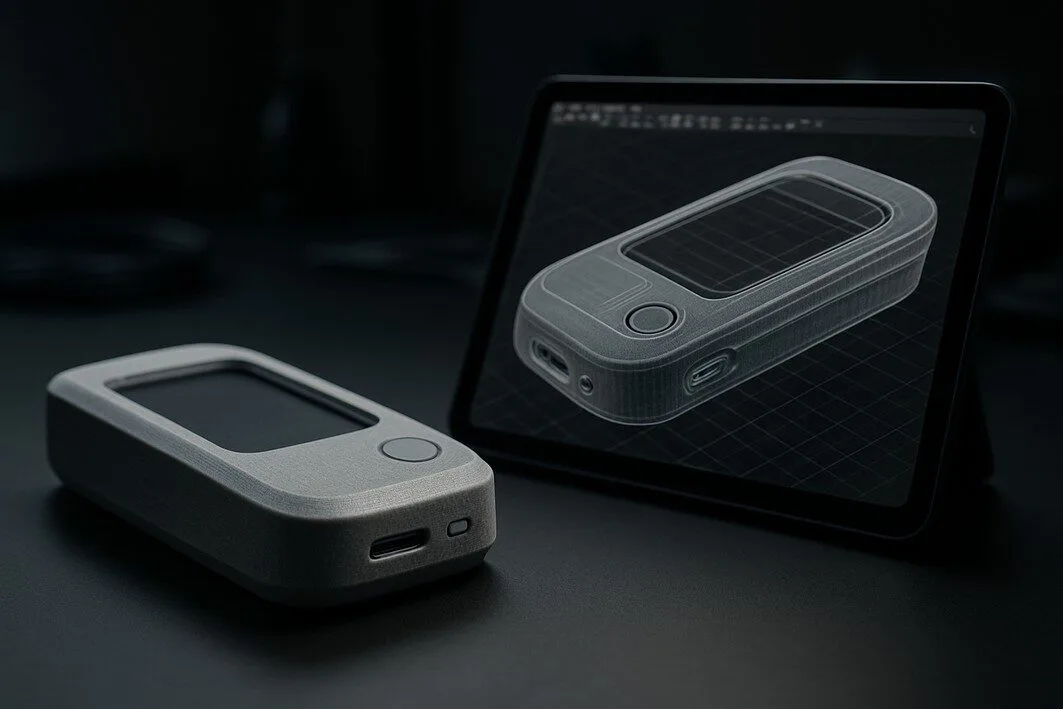What is product development? At its core, it is the complete, end-to-end journey of bringing a product from a concept or idea all the way to the market. This strategic process is the lifeblood of innovation, enabling businesses to create new value, solve customer problems, and stay competitive in a constantly evolving landscape. Whether you’re a startup with a groundbreaking idea or an established company looking to expand your offerings, understanding this process is fundamental to success.
Table of Contents
This complete product development guide will walk you through the entire lifecycle, from the initial spark of an idea to post-launch success. We will explore the key stages, methodologies, and strategic considerations that turn a vision into a tangible, market-ready reality.
What Best Describes Product Development? A Deeper Look
So, what best describes product development? It’s much more than just design or manufacturing. It is a holistic, multi-stage process that integrates market research, business strategy, engineering, and marketing to guide a product’s progression. It involves a series of cross-functional activities that transform an opportunity into a product available for sale.
The meaning of product development is rooted in strategic execution. It answers a sequence of critical questions:
- Why? Why does this product need to exist? What problem does it solve?
- What? What will the product do? What features will it have?
- How? How will we build it, test it, and ensure its quality?
- Who? Who is the target customer, and how will we reach them?
Ultimately, it’s a disciplined framework for mitigating risk, validating assumptions, and maximizing the chances of commercial success.
The Core Stages of the Product Development Lifecycle

The product development process is often broken down into a series of distinct stages, though they can overlap and are often iterative. This lifecycle ensures that every aspect of the product is carefully considered before launch.
Stage 1: Ideation and Market Research
Every product begins as an idea. This initial stage is all about brainstorming and identifying opportunities. Ideas can come from anywhere: customer feedback, internal team suggestions, analysis of market trends, or identifying gaps left by competitors. Once a pool of ideas is generated, rigorous market research is conducted to validate their potential and understand the competitive landscape.
Stage 2: Concept Definition and Feasibility
With a promising idea in hand, the next step is to define the product concept and assess its viability. This involves:
- Defining the Value Proposition: Clearly articulating the unique value the product offers to customers.
- Outlining Core Features: Specifying the key functionalities and characteristics.
- Business Case Analysis: Evaluating the financial viability, including cost projections, pricing strategies, and potential return on investment. This is where tools like an ROI calculator can be invaluable for making a confident, data-driven decision.
- Technical Feasibility: Determining if the product can be built with available technology and resources.
Stage 3: Prototyping and Design

This is where the idea begins to take physical or digital form. The design and engineering teams work to create a detailed blueprint and, subsequently, a prototype. A prototype is an early model of the product that allows teams to test functionality, ergonomics, and design assumptions. This can range from a simple paper sketch or digital wireframe to a fully functional pre-production model.
Stage 4: Testing and Validation
With a prototype, the team can begin the crucial process of testing. This stage is about gathering feedback to refine and improve the product before committing to mass production. Testing can include:
- Internal Testing: Quality assurance (QA) teams test for bugs, security flaws, and usability issues.
- User Testing: Real customers interact with the prototype to provide feedback on their experience.
- Market Testing: A limited release (beta test) in a controlled market segment to gauge reception and gather real-world performance data.
Stage 5: Manufacturing and Commercialization
Once the product design is finalized and validated, it’s time to scale up. This stage involves setting up the supply chain, finalizing manufacturing processes, and preparing for the market launch. The marketing and sales teams work in parallel to develop the go-to-market strategy, which includes pricing, distribution channels, promotional activities, and sales team training.
Stage 6: Post-Launch Evaluation and Iteration
The product development journey doesn’t end at launch. After the product is in the hands of customers, the team must continuously monitor its performance. This involves tracking sales data, gathering customer feedback, monitoring reviews, and identifying opportunities for improvement. The insights gained here fuel the next cycle of product development, whether through minor updates, feature additions, or the conception of the next-generation product.
Why is Product Development Important for Your Business?
A structured approach to product development is not just a good practice; it’s a strategic imperative. It allows your business to:
- Drive Innovation: Systematically create new and improved products that meet evolving customer needs.
- Gain Competitive Advantage: Differentiate your brand and capture market share.
- Increase Revenue: Introduce new revenue streams and enhance the value of existing ones.
- Improve Efficiency: Reduce waste and mitigate risk by validating ideas before investing heavily in production.
- Enhance Customer Loyalty: Deliver high-quality products that solve real problems and delight users.
Partnering for Success: How to Navigate Your Product Development Journey
Navigating the complexities of product development can be challenging, especially when it involves intricate electronics or hardware. Success often depends on having a clear roadmap and the right expertise to guide you through each stage. Working with a partner who has a comprehensive knowledge base and a proven track record can be the difference between a stalled project and a successful market launch.
A focused approach ensures that from the initial ideation and feasibility analysis to prototyping and manufacturing, every step is executed with precision. For those looking to bring a new electronic product to life, understanding the full scope of the process is the first step. To see how these stages come together in a structured service, you can explore our end-to-end product development process for a detailed overview.
Conclusion: Bringing Your Vision to Life
What is product development? It is the structured, strategic, and creative process of transforming a simple idea into a valuable product that customers love. By following a disciplined lifecycle—from research and ideation through to launch and iteration—businesses can systematically innovate, grow, and lead their industries. It is the engine that powers progress, ensuring that the best ideas are not only conceived but are also successfully realized.
“

